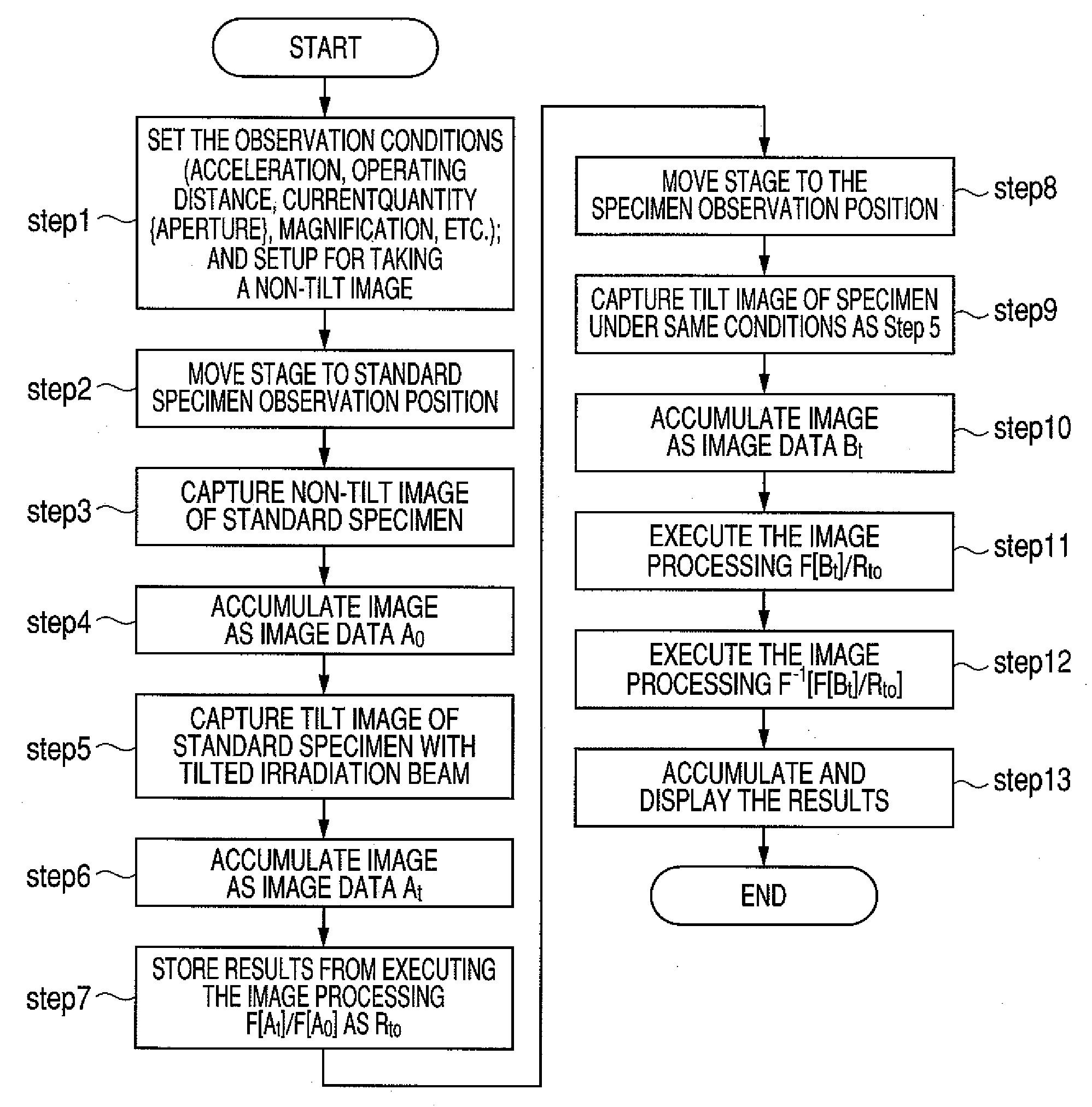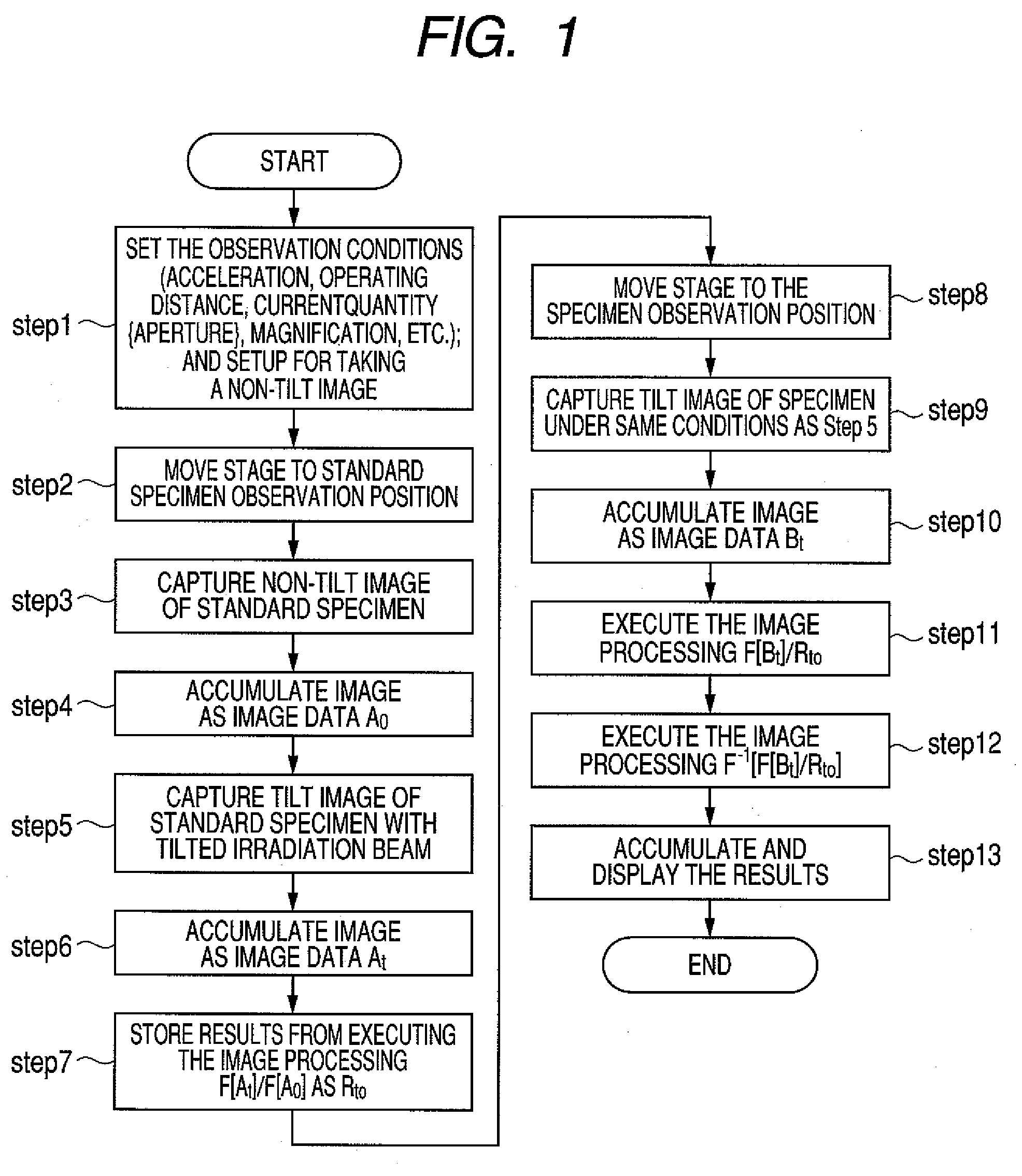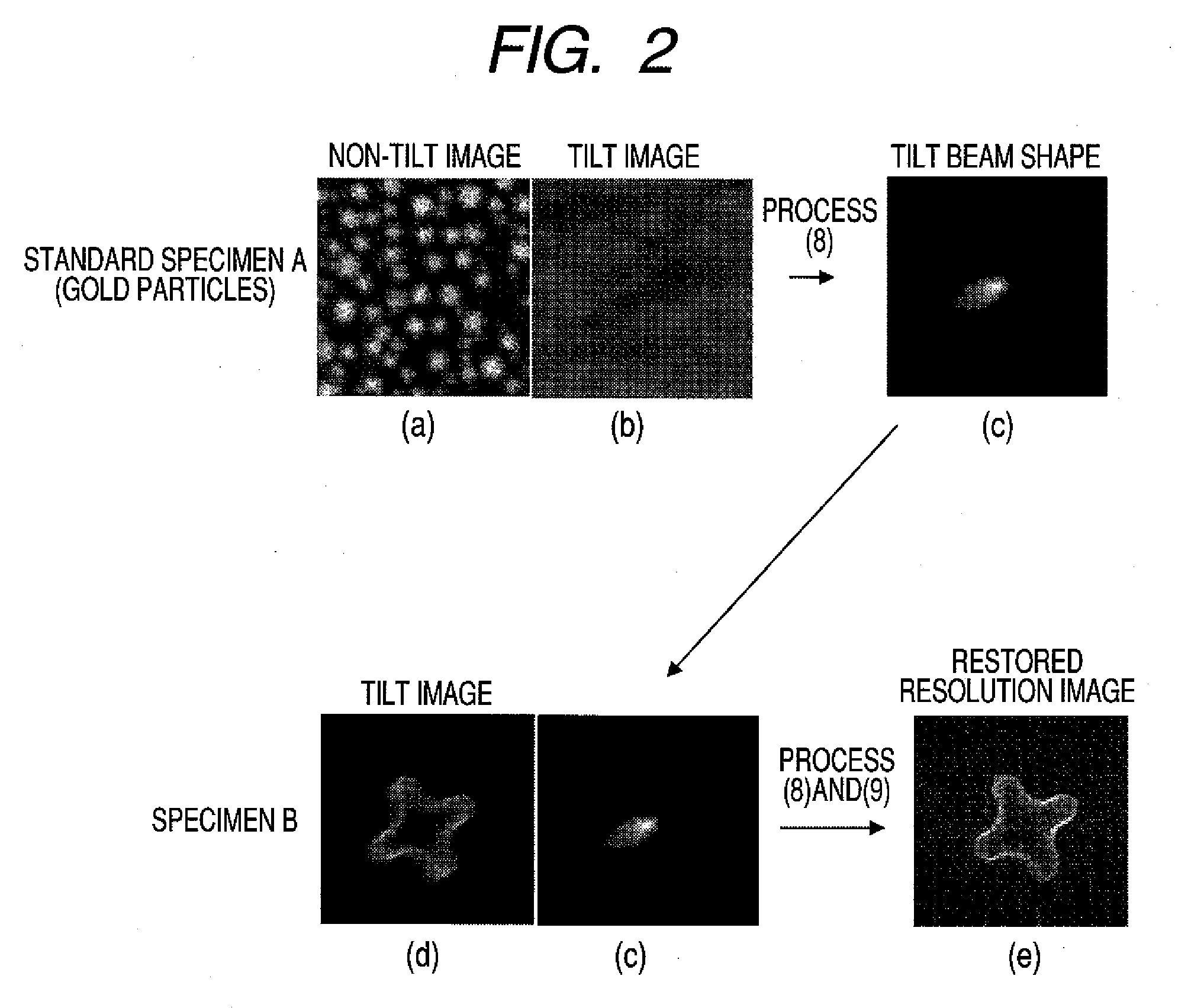Method and Apparatus of Tilted Illumination Observation
- Summary
- Abstract
- Description
- Claims
- Application Information
AI Technical Summary
Benefits of technology
Problems solved by technology
Method used
Image
Examples
first embodiment
[0037]The procedure in the tilted illumination observation method of the first embodiment for acquiring a tilt high resolution image is described while referring to FIG. 1.
[0038]The operator first of all decides the SEM observation conditions (acceleration voltage, working distance: WD, electrical current quantity, and magnification, etc.) and sets a state for capturing non-tilt images (STEP 1). The specimen stage is next shifted to the standard specimen position built into a section of the specimen stand (STEP 2). An image is then captured at the magnification that the operator wants to observe the non-tilt irradiation image of the standard specimen (STEP 3). This image is accumulated as image data A0 in the memory unit. An optional name may be used as the name of the image from here onwards (STEP 4).
[0039]The beam is then tilted to acquire a tilt image of the standard specimen (STEP 5). If the beam tilt angle and azimuth must be found because three-dimensional processing or other ...
second embodiment
[0047]The structure of the critical dimension SEM serving as the tilted illumination observation apparatus of the first embodiment of this invention is shown next in FIG. 4.
[0048]In FIG. 4, a Schottky emitter 1 is an electron supply utilizing the Schottky effect to disperse for example oxygen and zirconium into single-crystal tungsten. A suppressor electrode 2 and an extraction electrode 3 are installed in the vicinity of the Schottky emitter 1. Heating the Schottky emitter 1 and then applying a voltage of approximately +2 kilovolts across the extraction electrode 3 and Schottky emitter 1 causes it to emit Schottky electrons. A negative voltage applied to the suppressor electron 2 suppresses electrons emitted from other than the tip of the Schottky emitter 1. Electrons leaving from the hole in the extraction electrode 3 are accelerated and converged to the desired acceleration voltage by the static lens formed by the first anode 4 and the second anode 5.
[0049]Electrons that left the...
PUM
 Login to View More
Login to View More Abstract
Description
Claims
Application Information
 Login to View More
Login to View More - R&D
- Intellectual Property
- Life Sciences
- Materials
- Tech Scout
- Unparalleled Data Quality
- Higher Quality Content
- 60% Fewer Hallucinations
Browse by: Latest US Patents, China's latest patents, Technical Efficacy Thesaurus, Application Domain, Technology Topic, Popular Technical Reports.
© 2025 PatSnap. All rights reserved.Legal|Privacy policy|Modern Slavery Act Transparency Statement|Sitemap|About US| Contact US: help@patsnap.com



